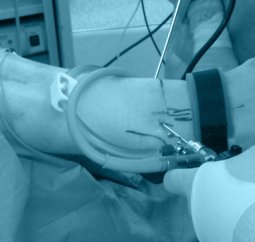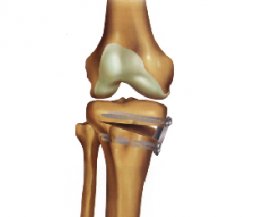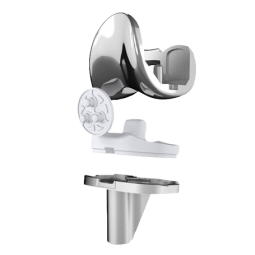Treatment of arthritis of knee joint, in other words erosion of joint cartilage, should always start with non-surgical methods. But if non-surgical methods don’t stop your pain and your movement range does not increase, your doctor might offer you some surgical interventions. You and your physician should discuss and decide together regarding treatment type and options.
The purposes of surgical intervention that is to be performed for osteoarthrosis can be ordered as; lessening the pain, increasing the movement, improving the life quality and comfort. The main purpose should be the satisfaction of the patient. Performed surgical treatment options can be ordered as arthroscopy, osteotomy, arthroplasty.
Osteoarthrosis
Arthroscopy

Arthroscopy is a method performed with small cuts and very small surgical tools. A small telescope is placed in the knee joint and joint is filled with liquid. Therefore the surgeon can see the existent diseases big and clear, almost like watching an aquarium.
Damaged cartilage or meniscus tissues in the joint can be trimmed, free objects are removed. Ruptured meniscus or torn connections, if necessary, can be repaired.
Arthroscopy will be beneficial for especially patients younger than 55 years of age, if the cause their complaint is ruptured meniscus.
Osteotomy

Osteotomy, in other words cutting the bone to correct the radial problems of the bone, should be performed only if the arthritis affected only some portion of the knee, especially the inner half. The purpose of this intervention is to relieve the excessively loaded inner half of the knee, allowing damaged cartilage to partially heal, removing pain and improving the funtions, and most importantly, to delay need for arthroplasty (prosthesis surgery).
Arthroplasty

Arthroplasty is the surgical intervention where damaged joint surfaces are changed. If all the treatments are insufficient to remove the pain, limit your movement and lower your life quality, your physician might suggest you undergoing a surgery like arthroplasty.
Knee joint has three different joint regions as inner haft, outer half and knee cap and knee recess. According to the placement of cartilage damage, one or more of these regions might need to be changed with prosthesis. The surfaces of the used prosthesis that contact the bone are metal, and the areas between metal parts contain plastic that is resistant to friction (polyethylene).
The result of knee prosthesis surgery is generally very well. The pain is elevated in the early periods after THE Surgery and movements increase. Again, the success of the result depends on the disciplined physical treatment for 6-12 weeks. For this purpose, patients need to exercise with a physiotherapist at the beginning and then continue performing their exercises in home environment.

